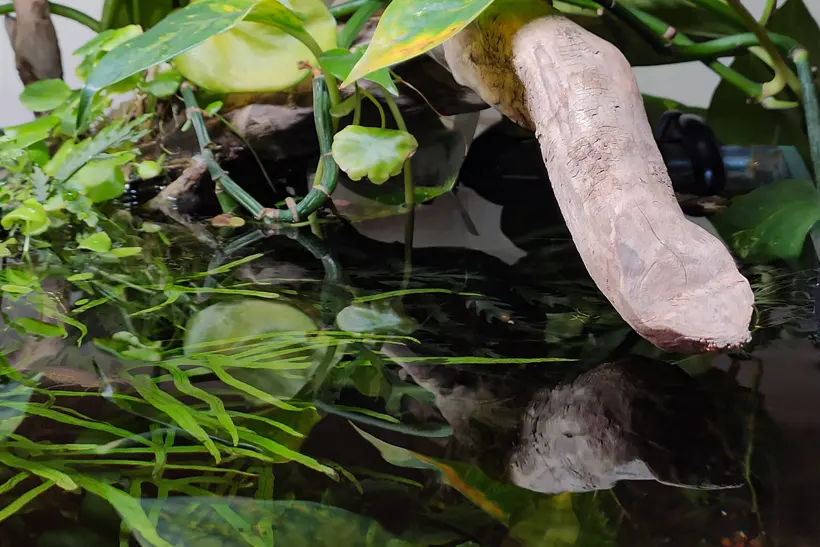Water is life. How many times have we heard this sentence?
As a matter of fact, if we think about it, living beings are made in a large part of water and they do need it in order to carry out their physiological functions, adjust the temperature and transport oxygen, nutrients or waste substances.
The cycle of water has been repeating itself since the birth of our planet, and our world has been shaped thanks to its action. During its path, from clouds to the sea, water erodes mountains and digs the ground, carrying dissolved elements that supply living beings with important substances.
Every time that a drop of water falls down from clouds, something incredible happens: water gets acidic, reacting with carbon dioxide in the atmosphere (CO2). A weak acid, of course, but when it fells on rocks it is capable of solubizing the elements rocks are made of and then starting their transportation. The more the contact with these rocks is long, the more substances will be dissolved into water.
In the same way, if the same drop of water fells on the ground of a forest, it can extract the humic acids and the tannins that come from decaying plant materials, which, with low concentrations of dissolved salts, will acidify the water.
Depending on the substances transported, water can have very different features, from a chemical and physical point of view. As a matter of fact, the values of hardness, pH and alkalinity of water are closely connected and they depend on the nature of molecules contained in a drop of water.
Simplifying to some extent, we can define the hardness of water as the set of salts dissolved in the liquid, while the pH as the acidity or basicity of it and the alkalinity as the ability of water to slow or block the alteration of the pH.
The importance of dissolved salts is such that with higher hardnesses, which means with high concentrations of these salts, water has generally a high and very stable pH (basic), together with a high value of alkalinity, which reflect the ability that salts themselves have to neutralize acid substances that may enter the solution.
These values greatly interfere with the life of organisms that live in an aquatic environment. The speed of multiplication and the quantity of bacteria that decompose the organic substance are strictly dependent to the pH and the hardness of the water in which they live, just as the absorption processes of some essential elements are related to fish and plants lives.
Aquatic organisms are indeed evolved to take advantage of physical and chemical characteristics of water in which they live and for this reason it is necessary trying to recreate these conditions in our aquaria in the best way possible. Keeping fish in unsuitable conditions is one of the main causes of stress for fish, which leads them to get sick or not to fully express the colours and behaviours that keep us glued to the glass of our aquaria.
A mature aquarium consumes a great deal of salts and microelements through the normal physiological functions of bacteria, fish and plants, and so is necessary to integrate them once again. The best way to do so is by changing water.
In order to avoid large fluctuations of values, we suggest changing the 10% of the tank water every week. We also suggest using osmosis aquaria (like Amtra Osmosis System 190), so that you can keep under control the values that we would want in our aquarium, reintegrating water through specific salts.
For freshwater tanks you can use AMTRA KH + and AMTRA GH+. You can add these liquid integrators directly to the tank after having restored the water level. For what concerns community aquaria with plants, we suggest dosing the salts in order to have KH 4 and GH 8: a relatively low hardness value, safe to avoid dangerous fluctuations of pH and able to allow the acidification of water if required by the aquarium.
In saltwater aquariums, osmosis water has to be reintegrated before the introduction into the tank, through the usage of the specific salt AMTRA PRO REEF SALT, in order to generate the complexity of elements that you can normally find in tropical oceans.
To prevent problems to the filter given by eventual fluctuations of values during the maintenances, we suggest dosing bacteria, using the recommended ones for the ordinary maintenance, such as AMTRA CLEAN PROCULT, AMTRA PROCLEAN X and AMTRA CLEAN.
In any case, before adding new water to the tank, we suggest using a good bioconditioner, either if you use the osmosis water and, mostly, if you use mains water. Its main function is to bind chlorine and heavy metals normally found in our tap water, in order to make the water less aggressive for fish’s mucus membranes and bacteria of the filter. The most common product is surely AMTRA CARE, suitable for the usage both in freshwater tank and saltwater tank. In biotope freshwater aquaria, plantaquaria and generally all freshwater tank, the most suitable bioconditioner is AMTRA PRO NATURE PLUS, mostly if you use osmosis water. Thanks to its carbon compounds, this product integrates natural substances useful for the organisms that live in the aquarium.
ABOUT THE AUTHOR

Lorenzo Tarocchi
Laurea Magistrale in Agriculture, Master degree in Aquaculture and Ichthiopathology
Born in 1986, Laurea Magistrale in Agriculture, Master degree in Aquaculture and Ichthiopathology. Passionate about fishing and everything that lives underwater, he began working in an Aquarium shop in 2010 and over the years in one of the major Italian ornamental fish facilities, in the meantime collaborating with the Natural History Museum of the University of Pisa and with some important companies of the sector.



